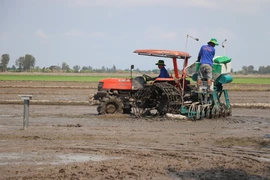Vietnam was followed by Thailand with an export value of 33.63 million SGD, while India came third with 33.16 million SGD.
The decline in export value of regular brown rice and white rice was offset by the strong increase of sticky rice, milled or peeled fragrant rice and broken rice with turnovers of 3.79 million SGD, 18.06 million SGD and 575,000 SGD, respectively.
Particularly, besides Vietnam's traditional strong product of white rice, the turnovers of two other product groups - sticky rice and milled or peeled fragrant rice - also rose to dominate the majority of the market share in Singapore, reaching 80.08% and 73.33% respectively. This was the main factor that helps Vietnam surpass Thailand and India to become the country with the largest rice market share in Singapore, the office asserted.
According to the office, Thailand, India, and Japan have been major competitors of Vietnam in Singapore. India's ban of rice export from July 20, 2023, has created good conditions for Vietnam to increase market share in Singapore.
However, the office advised Vietnamese rice exporters to continue improving their competitiveness and enhancing the quality of rice.
The office will organise more exhibitions to increase the presence of Vietnamese rice in this potential market.
The office cited data from the Accounting and Corporate Regulatory Authority (ACRA) of Singapore as showing that Singapore imported nearly 112.9 million SGD worth of rice in the first three months of this year, up 23.86% year on year.
In order to increase market share and sustainably maintain its top position, according to the office, all ministries, sectors, localities, associations, and businesses should join hands together in strengthening promotion of Vietnamese rice products and trademarks.
Alongside, the signing of a memorandum of understanding in rice trading between Vietnam and Singapore will also be an effective tool for Vietnam to maintain its position of No.1 rice supplier in Singapore, it added./.






























